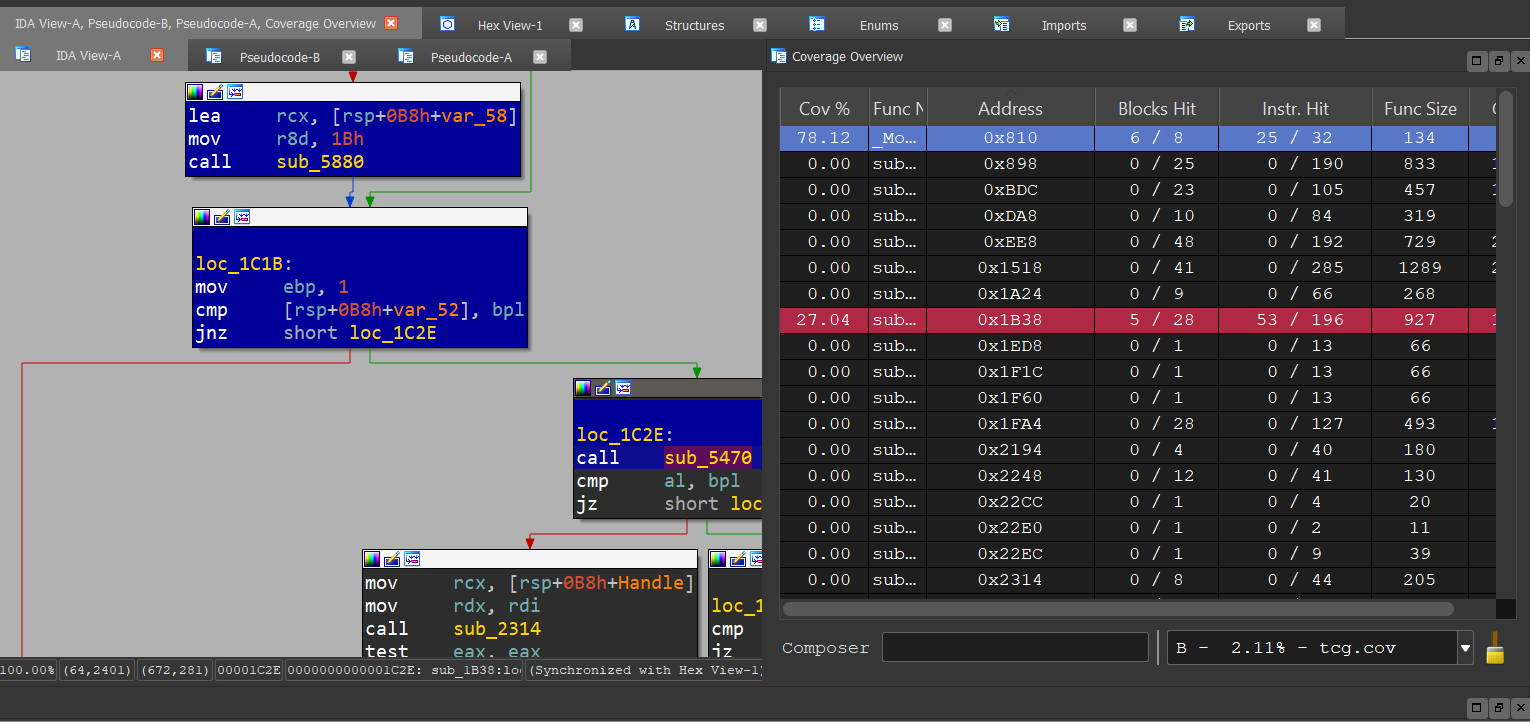Overview

The code coverage plugin is capable of collecting code coverage information from targets running under Qiling Framework. Afterwards, the results can be serialized into a format suitable for further processing or manual viewing. By leveraging the code coverage plugin, one can know exactly which parts of the emulated code were executed and which weren't. Needless to say, this is an invaluable ability and can greatly aid any security-oriented research in couple of domains such as general RE, vulnerability research, exploit development, etc.
Command-line interface
The command-line interface for controlling code coverage is comprise of two new switches in qltool:
-c, --coverage-file: Specifies the name of the output coverage file. This file can later be imported by coverage visualization tools such as Lighthouse in order to visualize the trace:--coverage-format: Specifies the format of the coverage file. Currently only thedrcovformat is supported. If you wish to add support for additional formats, please read the relevant section.
./qltool run -f examples/rootfs/x8664_efi/bin/TcgPlatformSetupPolicy --rootfs examples/rootfs/x8664_efi --coverage-format drcov --coverage-file TcgPlatformSetupPolicy.cov
Script
To generate a coverage file from the script, you need to import:
qiling.extensions.coverage and move ql.run() inside
with cov_utils.collect_coverage(ql, covType, fileDest):.
Example:
from qiling import *
from qiling.extensions.coverage import utils as cov_utils
[...]
[...]
ql.os.set_syscall(4118, my_syscall_fsync)
with cov_utils.collect_coverage(ql, 'drcov', 'output.cov'):
ql.run()
[...]
Extending the plugin to support additional coverage formats
Currently, the plugin is only capable of omitting code coverage files which comform to the 'drcov' format used by the DynamoRIO tool of the same name. If you wish to extend the plugin by adding support for new coverage formats, please follow these steps:
- Create a new source module under the
coverage\formatsdirectory. - Make the new format "discoverable" by adding its name to the
__all__list incoverage\__init__.py - Create a new class which inherits from
QlBaseCoverage. - Implement all base class methods which are marked with the
@abstractmethoddecorator: FORMAT_NAME: a user-friendly name for the coverage format name. This name will be presented in the help message ofqltoolas one of the possible choices for a coverage format.def activate(self): Starts code coverage collection, for example by registering a new basic block callback.def deactivate(self): Stops code coverage collection, for example by de-registering the aforementioned basic block callback.def dump_coverage(self, coverage_file): Should open the file specified incoverage_fileand then write all the collected coverage information into it. Usually the coverage format will dictate some fixed-size headers, followed by a variable-length list of the individual basic blocks which were encountered during emulation.